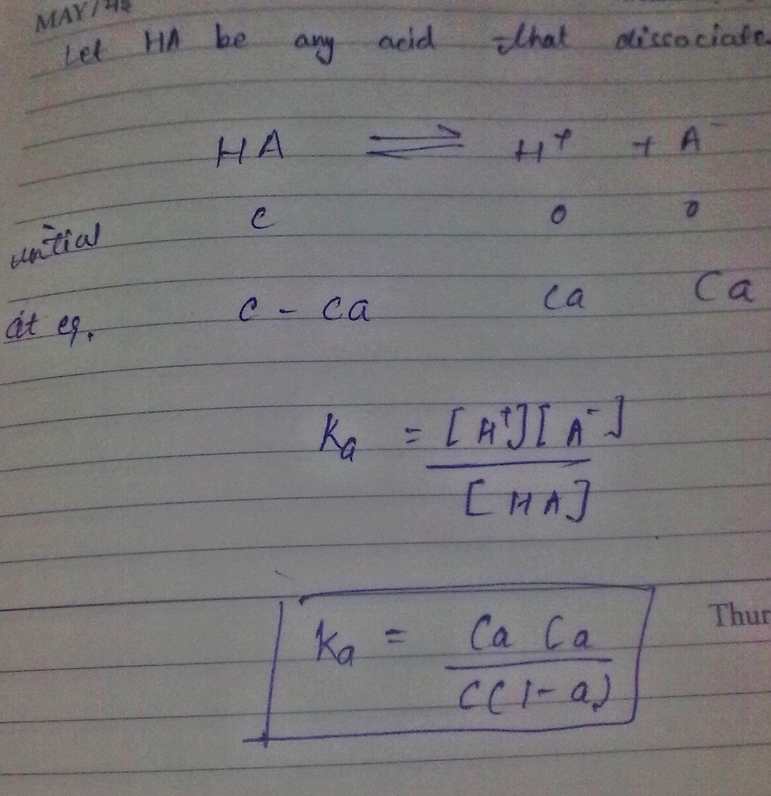sir/ma'am,
i wntd to know how does c(1-a)comes in calculating Ka for acids whr c==initial concentration of acid,a=degree of ionisation
sir/ma'am,
i wntd to know how does c(1-a)comes in calculating Ka for acids whr c==initial concentration of acid,a=degree of ionisation











